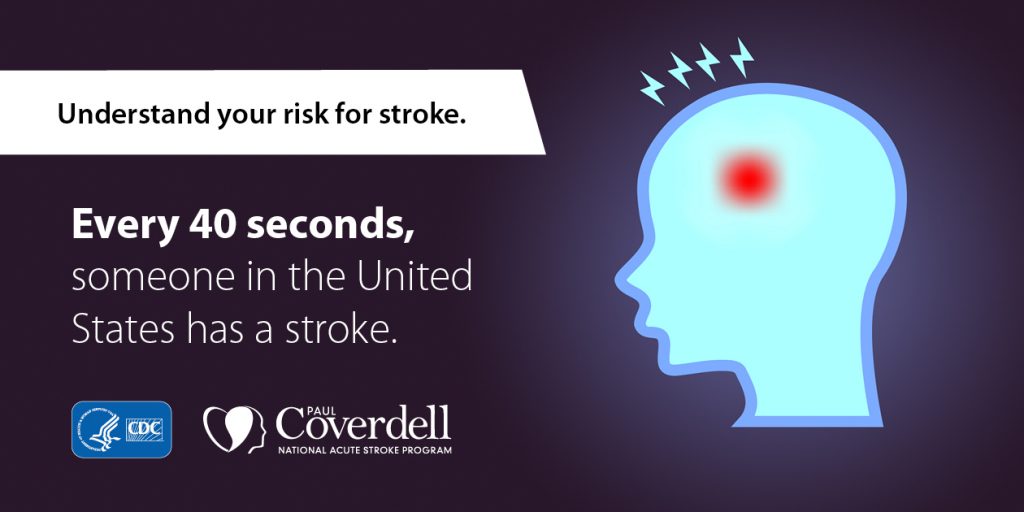May Is National Stroke Awareness Month
Stroke is one of the leading causes of death in the United States, with one American experiencing a stroke every 40 seconds and one American dying of a stroke every four minutes. (Source: CDC) Yet, not everyone knows the signs associated with a stroke. Each May, heart and health organizations make efforts to raise awareness about the causes, symptoms and risk factors associated with strokes and share preventative tips about how you might lower your chances of having one.

Image Credit: CDC
A clear link exists between heart disease and stroke. If you had a heart attack in the past, this automatically raises your chances of experiencing a stroke in the future. The good news is, many of the steps you might take to lower your risk of heart disease also lower your chances of suffering a stroke. What are some of the steps you might take to reduce your odds of developing heart disease or having a stroke?
Heart Disease & Stroke: Preventative Measures
You may be able to lower you risk of heart disease and stroke by doing the following.
Quitting smoking
There is no question that smoking increases your chances of heart disease and stroke. Estimates suggest that smokers may be twice as likely as non-smokers to have certain types of strokes. Smokers are also more likely to have high blood pressure, which is another significant risk factor for stroke.
Eating healthy and maintaining a healthy body weight
Diet also has a substantial impact on your heart disease and stroke risks. Try to forgo sugars, processed foods, sodium, and trans and saturated fats in favor of fresh fruits and veggies, nuts, and lean and plant-based proteins. You may also want to figure out your body mass index and, if necessary, take steps to reduce it.

Image Credit: American Stroke Association
Understand your risk factors
Recognizing what heart disease and stroke risk factors you have and taking steps to mitigate them is also a critical part of staying healthy. You may not be able to mitigate certain contributing factors, such as family history. However, many risk factors associated with heart disease and stroke are relatively easy to reduce through lifestyle changes. Work with your doctor to figure out how to eliminate or reduce certain risk factors you may have, such as high blood pressure or diabetes, among others.
BE FAST in Recognizing Signs of Stroke
Learning to recognize signs of a stroke is as important as identifying what risk factors you have for one. The acronym BE FAST is an important mnemonic tool you may use to remember key signs associated with stroke.
Balance Loss
Eyesight Changes
Face Drooping
Arm Weakness
Speech Difficulty
Time to Call 911
When you or someone you love begins exhibiting any or all of these signs, seek immediate medical attention. Prompt medical intervention may mean the difference between experiencing brain damage and other serious stroke-related side effects or recovering and returning to life as you know it.






Sending Prayers, After my husband Stroke diagnosis in 2009. He was put on Thrombolytic therapy and after some time on therapy he didn’t feel any different, so we started on a Stroke Ataxia treatment protocol from Natural Herbs Centre ( natural herbs centre. com), the treatment effectively treated his Stroke condition. The slurred speech, muscle weakness, has subsided, he’s learning to write again. Its almost like a miracle!